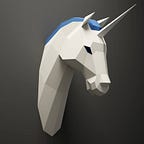NFT Art Definition
Deciphering the Definition of NFT Art: Exploring the Intersection of Digital Creativity and Blockchain Technology
In the ever-evolving landscape of digital art and blockchain technology, Non-Fungible Tokens (NFTs) have emerged as a transformative force, reshaping the way we create, buy, sell, and appreciate artwork in the digital age. At the heart of this revolution lies the concept of NFT art, a groundbreaking form of creative expression that leverages the unique properties of blockchain technology to redefine the notion of ownership, authenticity, and value in the art world. In this article, we’ll delve into the definition of NFT art, unpacking its significance, characteristics, and implications for artists, collectors, and enthusiasts.
Understanding NFT Art
NFT art refers to digital artworks that are tokenized as Non-Fungible Tokens (NFTs) on a blockchain network, such as Ethereum. Unlike traditional artworks, which are typically physical objects like paintings or sculptures, NFT art exists purely in digital form, often comprising images, animations, videos, or interactive experiences. Each NFT art piece is represented by a unique token on the blockchain, providing irrefutable proof of ownership, provenance, and authenticity.
Key Characteristics of NFT Art
- Indivisibility: NFT art is indivisible, meaning that each piece is unique and cannot be replicated or divided into smaller units. This indivisibility ensures the scarcity and exclusivity of NFT art, contributing to its value and collectibility.
- Non-Interchangeability: Unlike fungible assets like cryptocurrencies, NFTs are non-interchangeable, meaning that each token is distinct and cannot be exchanged on a one-to-one basis with other tokens. This non-interchangeability reinforces the uniqueness and ownership rights associated with NFT art.
- Verifiable Ownership: NFT art is accompanied by verifiable ownership records stored on the blockchain, allowing collectors to prove their ownership of a particular artwork and trace its ownership history back to its creation. This transparency and immutability enhance trust and confidence in the authenticity of NFT art.
- Immutable Metadata: The metadata associated with NFT art, including details such as artist attribution, creation date, and edition size, is stored immutably on the blockchain, ensuring its integrity and permanence. This metadata provides valuable context and information about the artwork, enriching the collector’s experience.
Implications and Impact
The rise of NFT art has profound implications for artists, collectors, and the broader art ecosystem:
- Empowering Artists: NFT art empowers artists to reach a global audience, bypass traditional gatekeepers, and monetize their creativity directly through blockchain technology.
- Transforming Ownership: NFT art redefines the concept of ownership, allowing collectors to possess and trade digital artworks with unprecedented ease and security.
- Expanding Access: NFT art democratizes access to art, making it more accessible and inclusive by removing barriers such as geographical limitations and high entry costs.
Conclusion: Redefining Art in the Digital Age
As NFT art continues to gain momentum and recognition, it challenges conventional notions of art and ownership, paving the way for a new era of creativity, innovation, and cultural exchange in the digital age. By harnessing the power of blockchain technology, NFT art opens up exciting possibilities for artists to explore new mediums, audiences, and revenue streams, while offering collectors a novel and immersive way to engage with art. As we navigate this transformative landscape, the definition of NFT art evolves, reflecting the dynamic and evolving nature of creativity in the 21st century.
